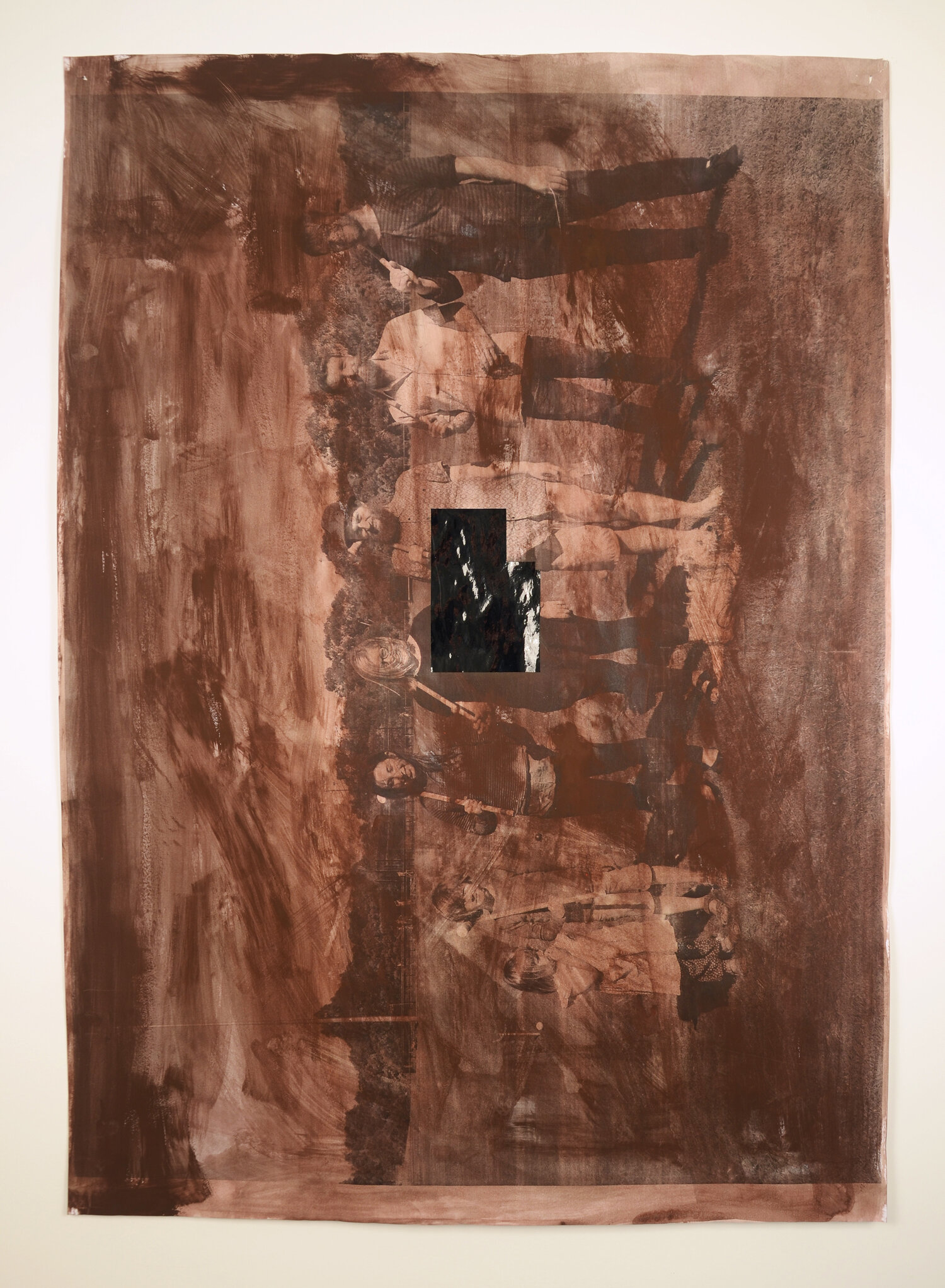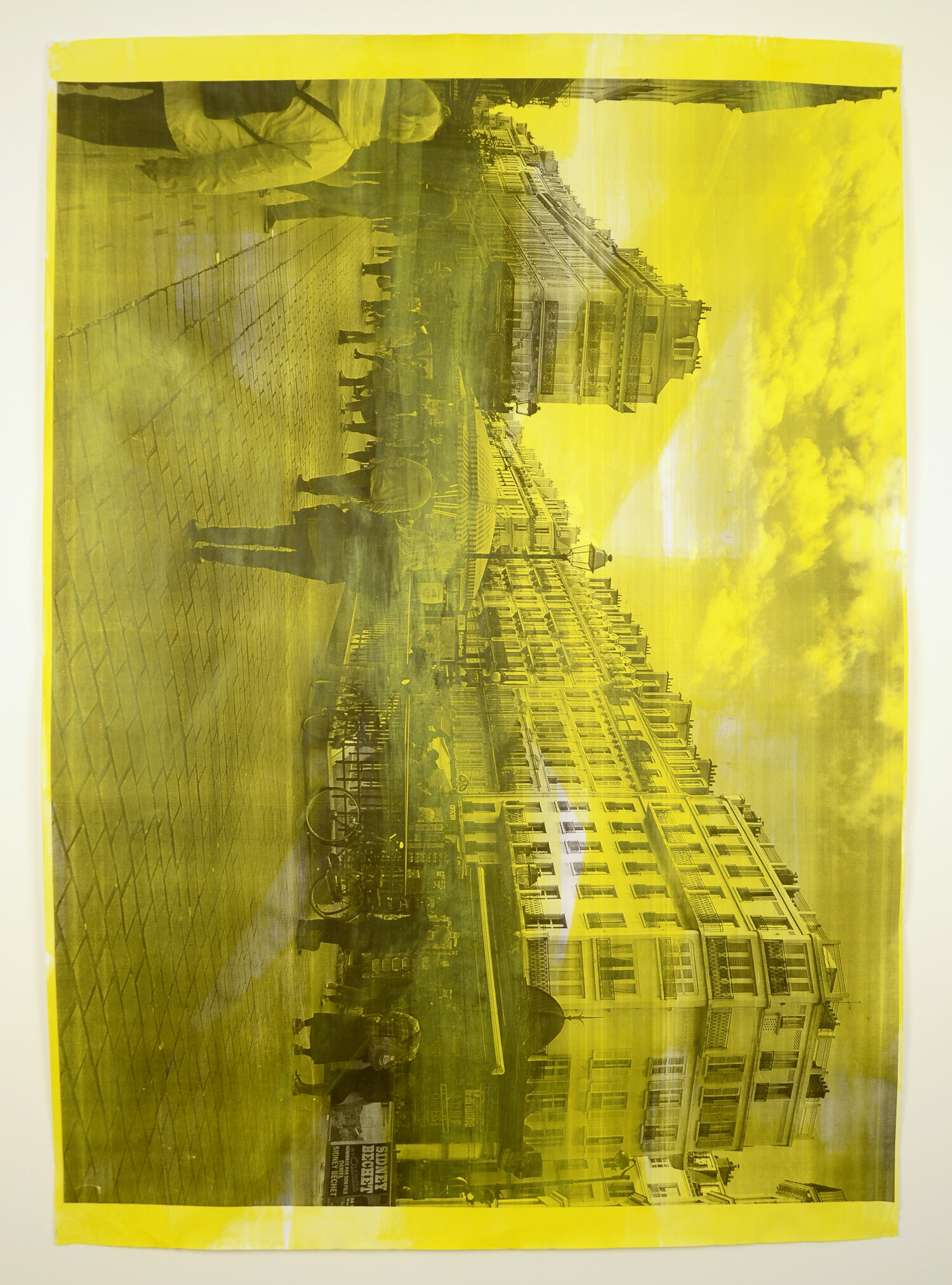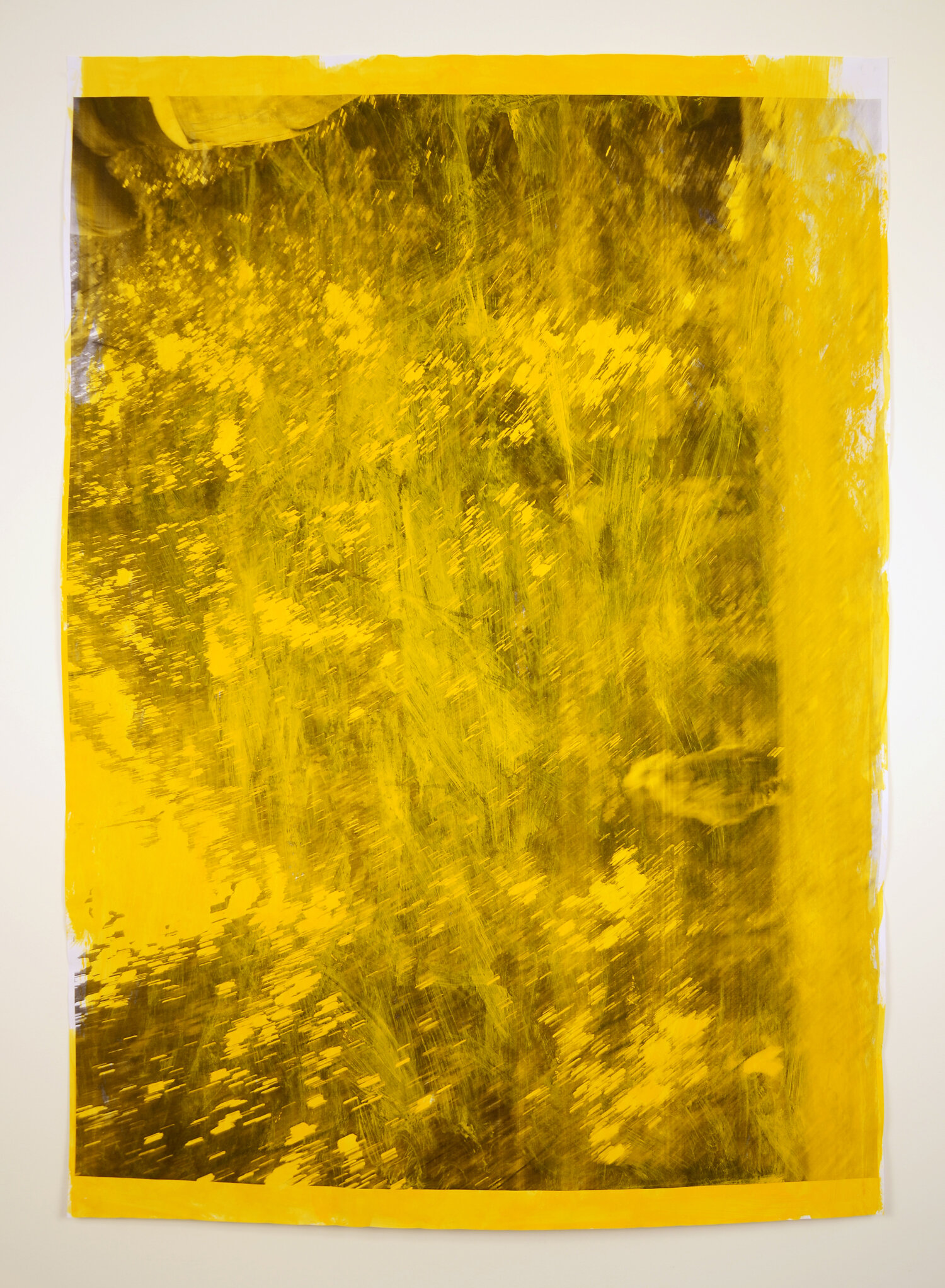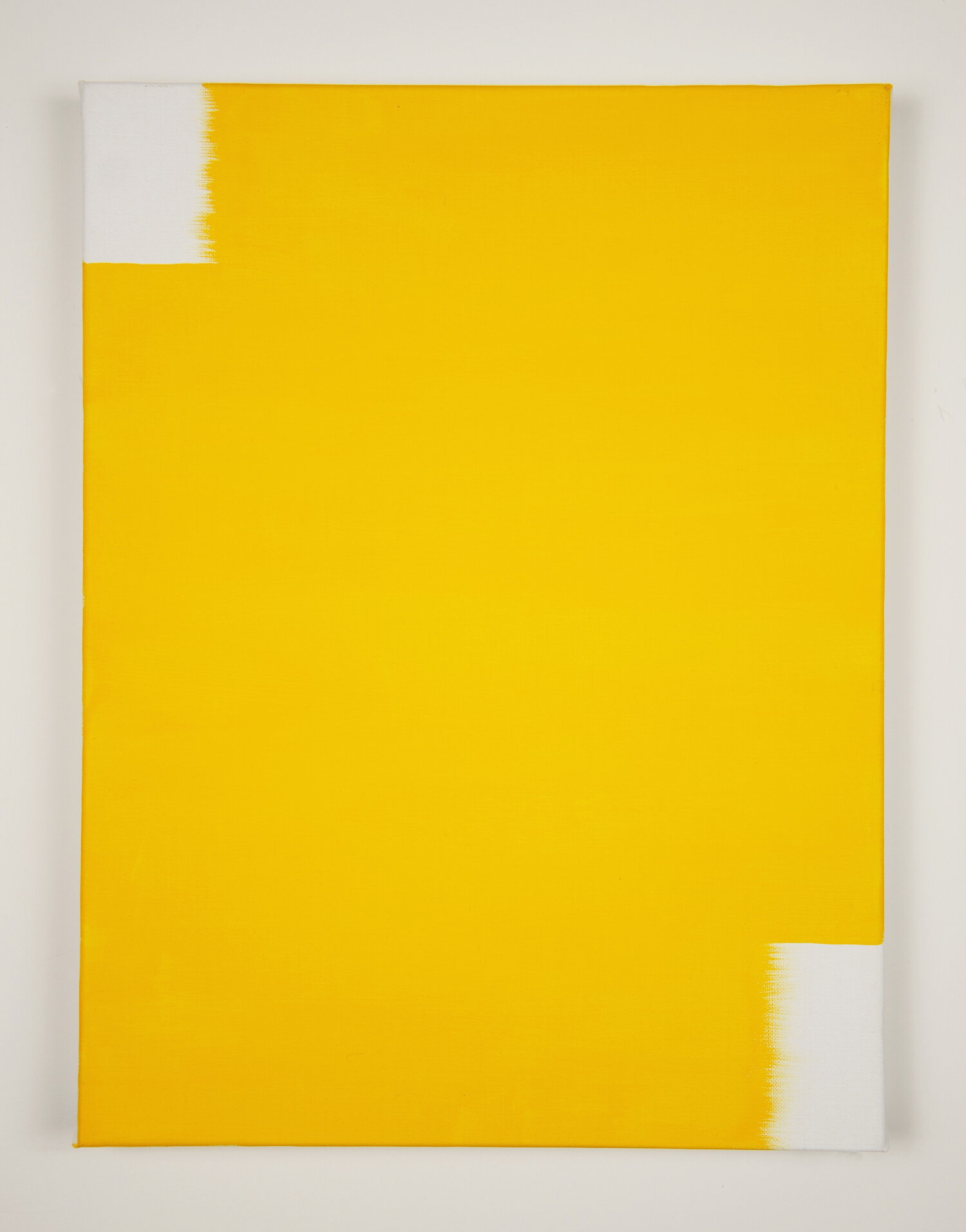David Thomas
b. 1951 Belfast, Northern Ireland / Lives in Melbourne, Australia
Interested in David Thomas? Contact us.
David Thomas, Impermanences, From Small to Big, From Big to Small, 2015, Collage, acrylic, and photocopy on paper, 46.5 x 32 inches, #DT16
David Thomas, Impermanence, Slow Time, Quick Time / Black / Yellow / Light + Dark, 2015, Acrylic, tape, and photocopy on paper, 46.5 x 32 inches, #DT20
David Thomas, Getting Bigger, Getting Smaller (Yellow Light), 2015, Acrylic and photocopy on paper, 47 x 33 inches, #DT23
David Thomas, Impermanence Grey, The Beginning Meets the End, 2015, Wire and photocopy on paper, 46.5 x 32 inches, #DT15
David Thomas, Homage a St. Paul (Paris) 14/11/15, 2015, Acrylic and photocopy on paper, 47 x 33 inches, #DT24
David Thomas, Many Worlds Blue, 2015, Acrylic and photocopy on paper, 47 x 33 inches, #DT26
David Thomas, Impermanences / Light Yellow / London Waterloo Bridge, Illusion + Real, 2015, Pencil, acrylic, and photocopy on paper, 46.5 x 32 inches, #DT18
David Thomas, Violet (Dark) MACBA, 2015, Acrylic and photocopy on paper, 47 x 33 inches, #DT22
David Thomas, Impermanences, Pigeon Visiting Paris, White + Grey, , 2015, Acrylic and photocopy on paper, 46.5 x 32 inches, #DT19
David Thomas, Impermanences, Dogs of London (Golden Yellow), 2015, Acrylic and photocopy on paper, 46.5 x 32 inches, #DT17
David Thomas, Movement of White on Gray, 2015, Acrylic and photocopy on paper, 47 x 33 inches, #DT27
David Thomas, When 2 Directions Become All Directions (Black Reflection), 2016, Enamel on linen, 16 x 12 inches, #DT29
David Thomas, When 2 Directions Become All Directions (Brown), 2015, Acrylic on linen, 16 x 12.5 inches, #DT12
David Thomas, When 2 Directions Become All Directions (Golden Yellow), 2015, Acrylic on linen, 16 x 12.5 inches, #DT11
David Thomas, When 2 Directions Become All Directions (Grey with White Edges), 2015, Acrylic on linen, 16 x 12.5 inches, #DT14
David Thomas, When 2 Directions Become All Directions (Light Gray), 2015, Acrylic on linen, 16 x 12 inches, #DT31
David Thomas, When 2 Directions Become All Directions (Light Yellow), 2015, Acrylic on linen, 16 x 12.5 inches, #DT13
David Thomas, When 4 Directions Become All Directions, 2016, Acrylic on linen, 16 x 12 inches, #DT28
David Thomas, Time Line 2, 2010, Acrylic on photo, 8 1/4 x 12 inches, #DT06
David Thomas, Dogs of London Series 2 (green 3), 2009-2010, Acrylic on photo, 17 x 22.25 inches, #DT03
David Thomas, Dogs of London Series 2 (green 2), 2009-2010, Acrylic on photo, 17 x 22.25 inches, #DT02
David Thomas, Dogs of London Series 2 (green 1), 2009-2010, Acrylic on photo, 17 x 22.25 inches, #DT01
Biography
David Thomas lives and works in Melbourne, Australia. He was born in Belfast, Northern Ireland in 1951 and arrived in Australia in 1958. Thomas has exhibited internationally for the past four decades, including in the United States, Australia, New Zealand, South Korea, Taiwan, China, Singapore, and throughout Europe.
Thomas’ work is represented in public collections including the National Gallery of Victoria, Australian National Gallery, Art Bank, Trinity College, University of Melbourne, RMIT University, Museum of Modern Art at Heide, Cripp’s Collection (Australia and UK); Chartwell Collection, Auckland Art Gallery, Canterbury University (New Zealand); Lim Lip Museum (South Korea); and Kunstmuseum Bonn, Theodor F. Leifeld Stiftung, and Kunstmuseum Ahlen (all Germany). He has received awards from the Australia Council, Art Gallery of New South Wales, and Arts Victoria, and has participated in residencies at the Cité International des Arts (Paris), Two Rooms Gallery (Auckland), Centre for Drawing Research, Wimbledon College of Art, University of the Arts (London), and Porthmeor Studios (St. Ives, UK).
Thomas has curated numerous exhibitions and written extensively on the subject of monochrome painting. He is a Professor of Fine Art at RMIT University in Melbourne where he has taught since 1992. Thomas holds an MA in Fine Art (Painting) and a PhD from RMIT University.
Statement
I am drawn to the monochrome by its visual energy and its emptiness. I like its deceptive simplicity. A pure monochrome exists only as an idea, not as a physical reality. An actual monochrome is seen in relationship to something else, a background, a wall, or another color. Other things impact on it and it on other things as an intervention. The monochrome if used in certain ways can help us see and consider the world around it more attentively. I use it as a temporal device, as an interval in the world.
The monochrome is complex. It exists as a painted surface as a material fact. It is a linguistic fact that comes out of specific cultural traditions of painting reflecting both local and global contexts. Whether it is an endpoint of a certain type of modernism as a reductive formalism, or whether it is an experiential field, or a disruption to our normal way of looking, the simple color field has the ability to generate questions in the world.
Web Site
www.davidthomasartist.com.au
Our Artsy Page
www.artsy.net/minus-space/artist/david-thomas
Social Media
Instagram























